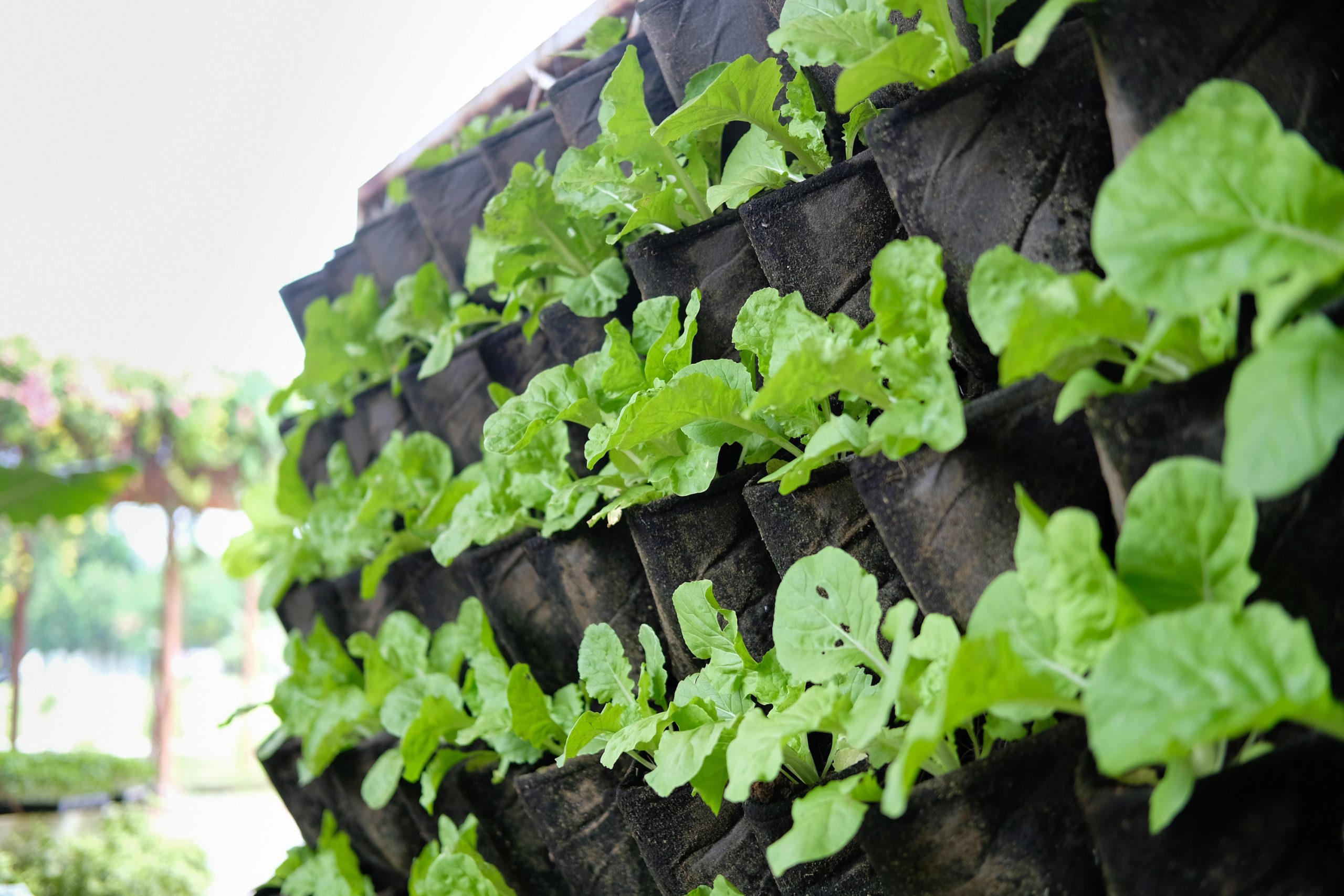How to create a vertical allotment in a small space
Save on space and cost by growing your vegetable patch vertically, with expert help.
Short of space but want to grow your own edibles? The answer may be to grow your own vertical allotment filled with salad leaves, herbs and tumbling tomatoes and strawberries.
Planting your fruits, herbs and vegetables strategically can give you a year-round harvest, without having to join the waiting list for your local community allotment.
Keep it simple
“Create tiered shelving, in which case the easiest things to grow are microgreens and pea shoots and rocket,” says Mark Ridsdill Smith, author of The Vertical Veg Guide To Container Gardening (Chelsea Green). “All the salads, plus herbs, would grow on shelves or on the rungs of an old ladder. That could be very productive in a small space.

“Microgreens need to go in a tray at least an inch deep with holes in the bottom. You can use mushroom trays with holes in them, lined with newspaper, for growing microgreens.”
Try inbuilt watering systems
View this post on Instagram
If watering is too time consuming, an inbuilt watering system within your container may be the answer, says Matt Lindsay, general manager at green infrastructure specialists Growing Revolution (growingrevolution.com).
“PlantBox, for example, has an inbuilt watering system making it effortless to keep your plants happy and healthy and can be fixed to an external wall, balcony, or even indoors. It’s ideal for growing strawberries, lemon balm, mint, thyme, basil, and sage and many more herbs, fruits, and vegetables.”
You can buy planting troughs with water reservoirs which once filled can last a couple of weeks depending on location, weather and how thirsty the plants are. Incorporated wicking felt means that plants take up water as they need it, so you don’t need to worry about over-watering either.
Create a salad bar
View this post on Instagram
“I’d raise a large trough – say 30cm deep and half a metre wide – up on bricks to create a salad bar,” says Chris Collins, head of horticulture at Garden Organic (gardenorganic.org.uk).
“It needs to be south-facing or east-facing. Sow in drills very quick crops such as microgreens or rocket, pea shoots, so you have a fast turnaround. Then put an obelisk in the centre of the trough and grow dwarf runner beans up that.”
Make use of the wall space behind the trough by putting some hanging basket brackets above it and planting trailing tomatoes or strawberries in the baskets, he suggests.
Re-use plant pots

Use existing plant pots to grow your favourite fruits and vegetables to save space and money on your vertical allotment, Lindsay says. “There are many vegetable varieties that can grow well in containers, including beetroot, herbs, runner beans and salad leaves.”
Make sure your pots are deep enough for your chosen plant and make a note of the specific care needed for each variety to give them the best possible chance of thriving, Lindsay suggests.
Ridsdill Smith adds: “If you want to grow larger salads, use bucket-sized, larger containers. The more soil you grow them in, the easier they are to look after. People do grow lettuces in guttering but it won’t hold much soil so plants will need a lot of watering because they will dry out quickly.”
Use climbers
Brilliant blue skies and beans. Beans, beans everywhere! #inmygardentoday #organic #nofilter #veggiepatch #walledgarden #growyourown #haveago #growyourown #gardeningwithwildlife #climbingbeans #bluesky pic.twitter.com/mzAGYXQTPN
— Gail Francis (@nannygail) September 7, 2021
Climbing French beans and runner beans are ideal for growing in a vertical space, either in a pot up a bamboo wigwam or in the ground secured with ties against a fence or trellis, says Ridsdill Smith. Other tall plants such as vine tomatoes with one main stem can be secured to a wall with string, if you screw small eyes into the wall above an old nail.
“Squash grow on a vine so don’t take up as much vertical space. ‘Tromboncino’ squash is a good one because it tastes quite like courgettes. You can eat the fruits small or let them grow to a metre long,” he says.
Make the most of windowsills
View this post on Instagram
Many herbs flourish when positioned on the windowsill. All you need is a spot that receives a good amount of sunlight, and you’ll be able to cultivate your own windowsill veg plot, says Lindsay. Have a go with herbs such as basil, thyme, or oregano.
Keep your vertical allotment going all year
Make the most of your vertical allotment all season by growing other leaves such as spinach, microgreens and salads, Ridsdill Smith advises.
“The key to having salad in winter is that most of them need sowing around September, to enable crops like rocket, winter purslane, lamb’s lettuce and mustards to last through the winter. They grow slowly in winter, but will put on a burst of growth come spring.”
View this post on Instagram
Chard and kale will also grow in winter, preferably in bucket-sized containers, and ideally need to be sown earlier in the summer for harvesting in winter, he adds.
The Press Association
Latest posts by The Press Association (see all)
- 5 new books to read this week - November 23, 2024
- 3 easy Mary Berry recipes to make this season - November 22, 2024
- In Pictures: Party stalwart kept New Labour in touch with traditional supporters - November 21, 2024
- 6 easy indoor exercises to try this winter – and why they are good for you - November 19, 2024
- Martin Clunes: I can’t afford to retire – I’ve got too many horses - November 19, 2024





















